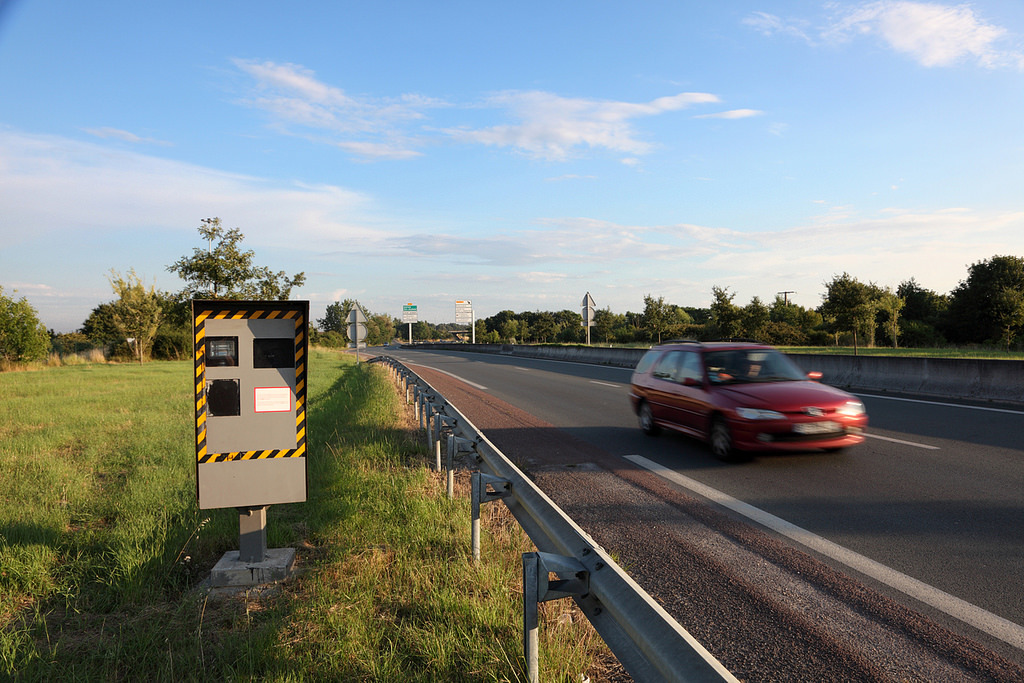Study These are the DGT radars that fine the most
Reform The great changes of the Traffic Law for March: the new fines and regulations that apply
Spanish highways and streets have a total of
2,640 static radars according to the
First Radar Observatory in Spain
prepared by Coyote, a company that provides driver assistance services and has a community of more than five million users in Europe.
That figure represents 4% more than those that existed at the beginning of 2021 and
it is expected that this year it will increase by 10%, to exceed 2,900.
The work is pioneering as it includes the speed controls placed by
the DGT, but also by the Mossos and the Ertzaintza
in Catalonia and the Basque Country, respectively, and which have transferred Traffic powers.
In addition, the urban radars that are
managed by the City Councils
are computed .
And there have been listed as many
fixed ones at one point (1,877 devices), as those of section (159), those of traffic light (391, which fine if you pass a disc in red) and those that control the use of the seat belt and mobile (213 devices).
The latter, capable of taking up to 50 photos per second.
Only mobile devices are left out of the study.
Catalonia, Andalusia and Castilla y Leon account for 54% of the controls
54% are in just three regions
This x-ray places
Catalonia
as the CCAA that most persecutes speeding.
It has
660 radars
, almost one in four.
Andalusia (337) and Castilla y León (319 radars)
appear next .
Between these three regions, they add up to 54% of the fixed controls.
Logically, this distribution is greatly influenced by the length of the roads in these regions.
Madrid (203) and the Basque Country (202) complete the top 5.
They are followed by Galicia (168), Comunidad Valenciana (156), Castilla La Mancha (118) and Aragón (108), all with more than 100 radars.
Following are the Communities of
Asturias (70), Balearic Islands (58), Canary Islands (56), Extremadura (55) and Navarra (55).
70% of the section radars are on conventional roads
There are also other interesting facts, such as the far from secondary role that cities assume.
In this way, while the
DGT, Mossos and Ertzaintza manage 1,535 radars, the City Councils are responsible for the other 1,105.
As for the distribution of interurban routes, 38.7% of those who control speed at a fixed point are on highways and motorways and 61.3% on secondary roads.
For the section, these percentages are 29.7% and 70.3%, respectively.
New sanctions from day 21
All this information is collected both in Coyote's connected devices and in its smartphone application.
"That makes us the most complete speed camera database in Spain, which is updated daily and automatically" says Gregoire Destre, Country Manager of Coyote Spain.
In addition, the user community also shares real-time alerts about mobile speed cameras or road incidents:
object on the road, stationary vehicle, traffic jam, accidents, narrowing, reduced visibility, etc.
According to data from Coyote, each of its drivers receives
an average of 430 notices throughout the year.
Warning of a traffic light control
Destre makes it clear when, in a few days, the reform of the Traffic Law will come into force.
It is contemplated that the only devices that can be used will be radar warning devices such as those offered by your company.
The inhibitors were already prohibited for years (six points and a fine of 6,000 euros), as well as the use of the detectors, but now the simple fact of carrying them on board the car is added, even if they are not used.
It will be three points and 200 euros.
The use of the mobile will lead to the loss of another six credits (and a 200 euro fine) just by carrying it in your hand;
and not wearing a belt, helmet or child restraint systems will deduct four points.
Fines from 100 to 600 euros and possible crime
Regarding speeding, in the table below you can see the economic penalty and the number of points that are lost based on the excess.
In addition, it is necessary to consider the cases in which the infraction becomes a criminal offence:
when the city limit is exceeded by 60 km/h (90 on a street of 30 or 110 on a street of 50), or when exceeds the maximum allowed on the road (go 170) or motorway (go 200 km/h) by 80 km/h.
Table with the different penalties for speeding
The 10 radars that sanctioned the most in 2020
This list includes all security forces.
Malaga A-7 / KM 246
48,771 complaints
Valencia AP-7 / KM 478
47,711 complaints
Tarragona AP-7 / KM 325
47,176 complaints
Madrid A-4 / KM 13
37,316 complaints
Malaga A-7 / KM 256
34,317 complaints
Seville SE-30 / KM 10
33,163 complaints
Girona C-31 / KM 312
31,348 complaints
Murcia RM-19 / KM 17
30,617 complaints
Valencia V-31 /
KM 5
30,107 complaints
Basin A-3 / KM 156
29,302 complaints
Conforms to The Trust Project criteria
Know more
DGT
Traffic
traffic accidents
MotorThe new fines and traffic regulations that will be applied in three months
MotorTraffic fails with older drivers
MotorThe Prosecutor's Office focuses on the state of the roads
See links of interest
Last News
Work calendar 2022
Florence - Bologna
Rayo Vallecano - Seville
Burgos CF - Real Sociedad B
Chelsea - Newcastle United
Everton - Wolverhampton Wanderers

